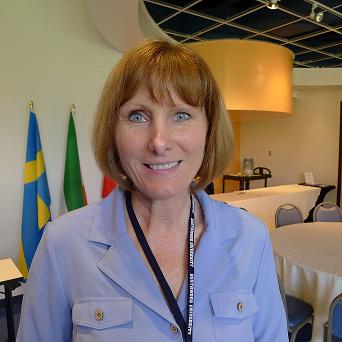McGunagle is one of four Leadership 2.0 participants who will be blogging this week from Northwood University’s campus in West Palm Beach, Fla. Members of the 2010-2011 class of the University of the Aftermarket Leadership 2.0 program reconvened Sunday on the campus for nearly a full week of intensive learning, problem-solving and networking. This year’s class includes 27 professionals representing virtually every level of the aftermarket, including manufacturing, distribution, association management and vehicle service. Contributed by Lisa McGunagle, HR manager, Federal-Mogul Corp., Global Aftermarket
Contributed by Lisa McGunagle, HR manager, Federal-Mogul Corp., Global Aftermarket
Tuesday’s Leadership 2.0 session started out with a lively discussion provoked by our University of the Aftermarket host, Brian Cruickshank [director of the University of the Aftermarket]. Brian posed a question regarding the value proposition of the aftermarket. There was debate on the end user’s perception of OE vs. aftermarket products and services. What is the customer’s perception? Are we offering the right value proposition? What are we doing to support our proposition? Are certifications (ASE, AAP, MAAP, etc.) supporting our credibility? Many questions and positions were bantered. I’m sure we could have spent hours on this discussion.
We then moved on to Dr. Timothy Nash’s discussion on U.S. and global aftermarket economics. I’m not sure how he does it, but Dr. Nash actually makes this topic very engaging and thought provoking! (Not like economics in college!) He focused on how America’s top 20 jobs have shifted over the past 110 years. We have moved to a society that relies more on intellectual property. This is why education is more important than ever, yet we see graduation rates continue to struggle. We need a new, more consistent model for education in the U.S. We see success in what we measure, and in education, we are weak on establishing metrics to measure and push performance. It still surprises me how many U.S. citizens never receive a high school diploma, much less a bachelor’s degree.
Dr. Nash also focused on the U.S. economy. In 2012 the national debt (over $14 trillion) will exceed the GDP. How do we get back on course as a nation? We also explored how corporate tax rates affect economic growth. In 2010, the U.S. combined corporate federal and state tax rates stood at 39.27 percent, second only to Japan. Ireland came in last (best) at a combined rate of 12.5 percent. How do we expect to attract and maintain business in the U.S. with this lack of incentive for corporations?
When discussing the Automotive Confidence Index, as presented by AAIA and Northwood University, it seems respondents are feeling “slightly more confident” now as compared to a few months ago.
We next began what would become a very interesting afternoon. Dr. Frank Morgan explored the art of negotiation. Dr. Morgan led the group in two negotiation exercises, each designed to demonstrate the importance of a collaborative (win-win) negotiating approach. The first challenged us to reach an agreement on price. Two divisions of the same company were to negotiate on product pricing and delivery. The outcome really demonstrated how important the opening bid is relative to getting close to your target and hopefully above your walk-away point.
The second exercise had an HR twist, so it was definitely “down my alley.” We were challenged to close a very desirable facility in Boston and convince a group of researchers to move to a small, not-so-attractive facility about an hour away. The situation created a great deal of tension between the management group and researchers. The researchers dug in their heels and were not receptive to a move. Some “outside the box” thinking was required to reach consensus.
This ended a very full day! Now I need to get back to my Leadership 2.0 group presentation project – one more practice before I call it a night!
Stay tuned tomorrow for more from this week’s Leadership 2.0 experience. To read yesterday’s blog post from Leadership 2.0 participant Glenn Schaefer of CARQUEST Canada, click here.
For additional information regarding Leadership 2.0 and other University of the Aftermarket programs, visit www.universityoftheaftermarket.com.













